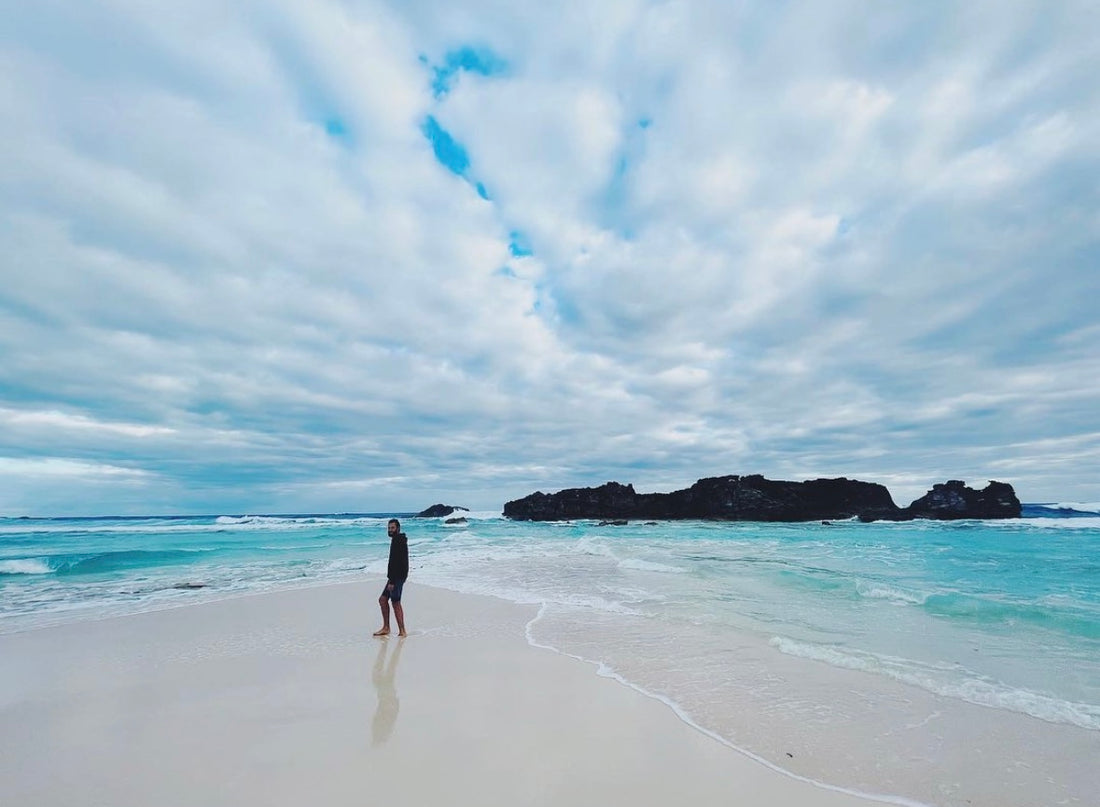It was a little bit of a dream scenario: in the middle of winter, an email came through with a project to travel to build a mushroom farm... on a tropical island. Building a mushroom farm was a slam dunk, and to be able to do so in a place that people generally go for vacation was just icing on the cake. And to sweeten the deal, the farm was already in full swing maxing out their current resources. When we arrived on the island, TCIMC was producing about 50 Lbs/week out of a small hoop house constructed inside a large warehouse. They were going to market with Lion's Mane and several species of Oyster and Trumpet mushrooms with known demand to produce more. "As much as possible."
(below, a hoop house contains humidity for the grow room in use when we arrived)

And it turns out, a lot was possible. The island climate was ideal for growing, with a little help. Temps regularly in the high 70's to low 80's, a little extra moisture and air circulation had the grow kits reliably producing beautiful fruiting bodies. The growers were already doing great work, so we were just providing a little extra guidance in best practices and then lending expertise to scale up the infrastructure.


So our work was cut out for us and we had an enourmous space to work in. Using a little imagination and a lot of experience, we designed the farm for efficient work flow. Clean and clear a space, build a frame, hang a door, wire in electricity, put up coroplast, install the fixtures, bring in the equipment. Rinse and Repeat.

(above, a door is hung on the completed frame for the inoculation room)
Each step presented challenges, but in the end we were very happy with how the different components came together. The TCI Mushroom Co team was very excited to get their new flow hood installed after working with an improvised sterile chamber using an upside down plastic bin and we were there for the first inoculation in the new lab.



In the pictures shown, 1) Willie oversees the completed frame of the lab. 2) The sterile lab environment is complete with easy to clean coroplast, a door, and running electricity for the flow hood and pressure cookers. 3) two sterilization barrels are wheeled in from outside to cool off. The medium inside can then be inoculated with the desired species of mushroom

The grow room is outfitted with an intake and exhaust fans to prevent build-up of CO2, and a pair of humidifiers will keep the growing environment at high humidity.
The shelves for the grow room and incubation room were delayed in shipping so we didn't see their final install, but the walk-in cooler came together like a dream. Located in the basement level of the farm, we were able to utilize geothermal insulation as a mitigation factor from the strong equatorial sun. We built the unit from scratch with available cooling and insulation materials.

A regular challenge of building on the island was working with what was available. Sometimes our plans didn't exactly fit into the space because of a pillar we didn't plan for, or a little chunk of concrete protruding just enough. We discovered that battery tools were twice as expensive as in the states, so it would have been worth checking an extra bag if it meant another cordless drill or impact driver. It would have been nice to work with our familiar tools that we took for granted (my kingdom for a sawhorse!), but we certainly made due finding everything we needed. Sometimes the exact materials were too costly to buy or import so we were always on our toes...
...and those toes were often sandy. Each day, once the work was done, we did some sight seeing to learn more about the tiny Carribean Country and some of the breath-taking natural beauty.



Take a tour of the farm on our YouTube Channel here, and follow Fungi Ally for more projects coming up soon!

